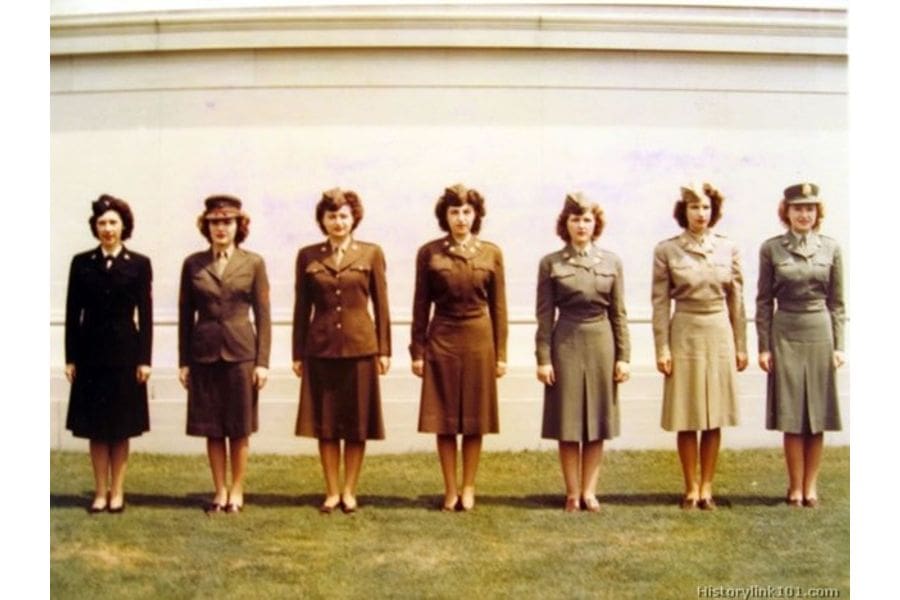image via History Link 101
It’s been a little over a week since Memorial Day, and we still can’t help but think about all the brave men and women that have served our country. This also got us thinking about women’s military uniforms.
It’s no secret that before women were legally allowed to serve in the U.S. armed forces, they fought in wars (including the Revolutionary War and the Civil War) disguised as men. Most disguises were blown when women got injured or fell ill and had to seek medical attention. If they were discovered, most women were simply sent home. On rare occasions, they were imprisoned for impersonating a male soldier.
How and when did women go from fighting undercover to proudly donning uniforms? Let’s take a quick look at the history of women’s military garb to find out!
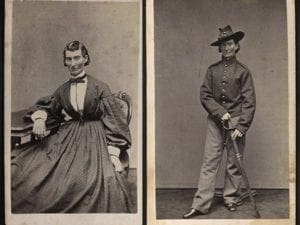
(image via Smithsonian Magazine)
For a long time, women could only serve in the military as nurses. The Army Nurse Corps (ANS) was established in 1901, nearly 17 years before the U.S. entered World War I. What started as a corps of fewer than 600 members continued to grow. Six months after the U.S. entered the war, nearly 1,100 nurses were serving overseas in nine base hospitals. By the end of the WWI, the Army Nurse Corps had over 20,000 members, with over half of them having served overseas.

(image via U.S. Army Nurse Corps)
When the U.S. entered World War II in December 1941, women’s roles in the military dramatically shifted. With a need to bring more men to the front lines, women were recruited to serve as air traffic controllers, intelligence officers, weather monitors, clerks, medical support, and other roles through the Women’s Army Auxiliary Corps, the Women’s Air force Service Pilots, and the Women Accepted for Volunteer Military Services. From a fashion standpoint, women’s uniforms went from all-white nurse dresses to classic army-green skirts and jackets.
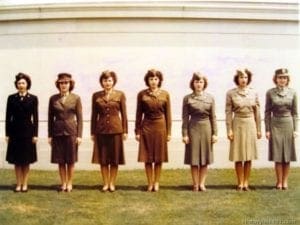
(image via History Link 101)
By the Vietnam War, thousands upon thousands of women were enrolled in the U.S. military. Some aspects of women’s uniforms remained the same, meaning they could opt to wear the traditional army green skirt and jacket, but pants became increasingly popular among female soldiers.
In the article ”Fashion vs. Practicality: The Evolution of the Female Uniform” (source), Rebecca Castellano interviews Col. Jane Crichton, who enlisted in the early 1980s as an Army administrative specialist. Crichton recalls showing up to boot camp and receiving the newest BDU (Battle Dress Uniform): “I remember wishing that we’d gotten the green uniforms because they looked better than the BDUs, and that the uniforms were a bit stiff until they were washed a few times.” There were two versions: a pantsuit and a skirt suit. “The pantsuit was horrible,” she added. ”[The uniforms] made you think that they were really trying to make you look as unappealing as possible.”
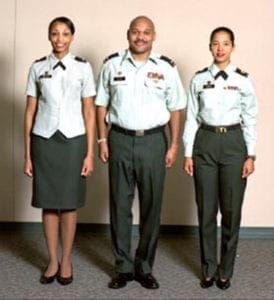
(image via U.S. Army)
This was pretty much the consensus across the board until 2009, when the Army Uniform Board began researching a female-only uniform. They discovered they would need to narrow the shoulders, taper and add elastic to the waist, flare the hip, and make the rear a little roomier. While this new design was aimed toward women, the Army soon realized this style fit everyone better, which led to the creation of the unisex uniform option in 2012.
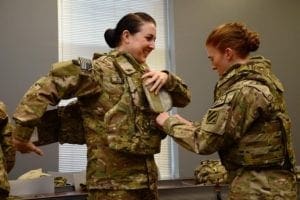
(image via U.S. Army)
In 2018, the Army once again opted to revamp its women’s uniforms, and it hired an all-women team to spearhead the project. They found that women preferred pants that were tailored to fit them. The Air Force and Navy began to follow suit, broadening their options by adding a maternity uniform and changing rules regarding hair length. Many of these new standards won’t take effect until 2027.
Women serving in the armed forces deserve both practical and functional uniforms. After years of waiting, we are so happy more and more women have been involved in this process and are getting the uniforms they deserve.
Sources: Women’s Military Uniforms Past & Present / U.S Army / Smithsonian Magazine

